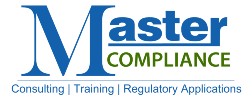For Part 1, please see Large Trader-Rule 13h-1 (Part 1).
Part 2
A large trader is required to file a Form 13H Initial Filing promptly after effecting aggregate transactions equal to or greater than the Identifying Activity Level threshold. After initial filing, Rule 13h-1(b)(1)(ii) specifies that an annual filing must be made within 45 days after the end of each full calendar year. The SEC will provide large traders with a large trader identification number (“LTID”). The LTID must be provided to each broker-dealer effecting transactions on behalf of the large trader. Each account that a large trader exercises investment discretion over should be “tagged” with the LTID so that the broker-dealer can meet its record-keeping requirements with respect to those accounts.
The SEC permits a person to register voluntarily as a large trader in order to minimize the burden of actively monitoring trading levels. Any person who voluntarily files a Form 13H will become subject to all of the obligations of a large trader under Rule 13h-1. A firm that is close to meeting the Identifying Activity Level should consider voluntarily registering as a large trader to remove the risk of missing a filing deadline.
A large trader that fails to file Form 13H and identify itself as a large trader is an “Unidentified Large Trader.” Rule 13h-1 requires that a broker-dealer treat any person or organization as a large trader that it knows or has reason to know is a large trader where such person has not complied with the identification requirement applicable to large traders. In such scenario, the broker-dealer should assign their own unique identifying number to each person it identifies as an Unidentified Large Trader.
When the transactional activity of a person rises to the Identifying Activity Level or the Firm otherwise believes such person is an Unidentified Large Trader, a broker-dealer should:
- Notify the Unidentified Large Trader of its potential reporting obligation under Rule 13h-1 and maintain a record of this notification; and
- Ensure that it (or the broker-dealer carrying the person’s account(s)) is meeting the recordkeeping and reporting provisions in paragraphs (d) and (e) of Rule 13h-1.
Depending on the nature of its business, a broker-dealer may need to adopt a surveillance program for the detection of Unidentified Large Traders. A broker-dealer with no or minimal trading activity will not need to conduct the same level of surveillance as a broker-dealer that has significant trading activity. In fact, some broker-dealers may have no legitimate need for a surveillance program.
Please note, a parent company can also be considered a large trader. The definition of large trader focuses on the ultimate parent company of an entity or entities that employ or otherwise control individuals that exercise investment discretion. To determine whether a parent company is a large trader, the trading activity of all entities controlled by the parent company must be collected and aggregated at the parent level. In other words, a parent company must aggregate all accounts over which it has investment discretion with all accounts over which anyone controlled by the parent company (for example, a subsidiary) exercises investment discretion. If the aggregated trading activity equals or exceeds the Identifying Activity Level, the parent company is a large trader and would be required to report information on behalf of itself and the affiliates under its control.



